Smell & Taste - Enterline
1/55
There's no tags or description
Looks like no tags are added yet.
Name | Mastery | Learn | Test | Matching | Spaced |
|---|
No study sessions yet.
56 Terms
what 2 components make up the external nose?
1. cartilage (to strengthen the nares)
2. nasal bone
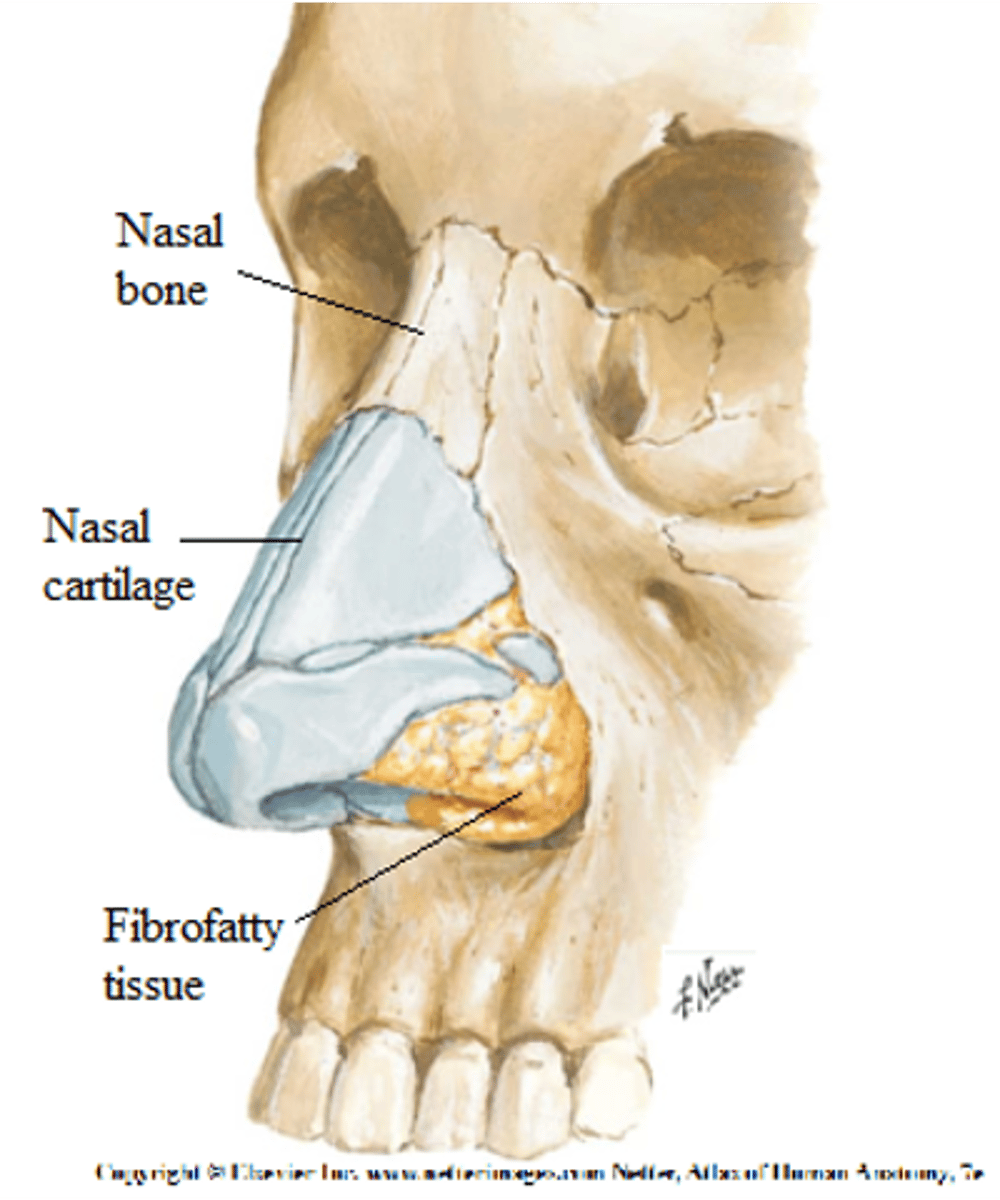
what makes up the medial wall of the nasal cavity?
nasal septum
what 2 bones make up the nasal septum (along with the cartilage)?
1. vomer bone
2. ethmoid bone
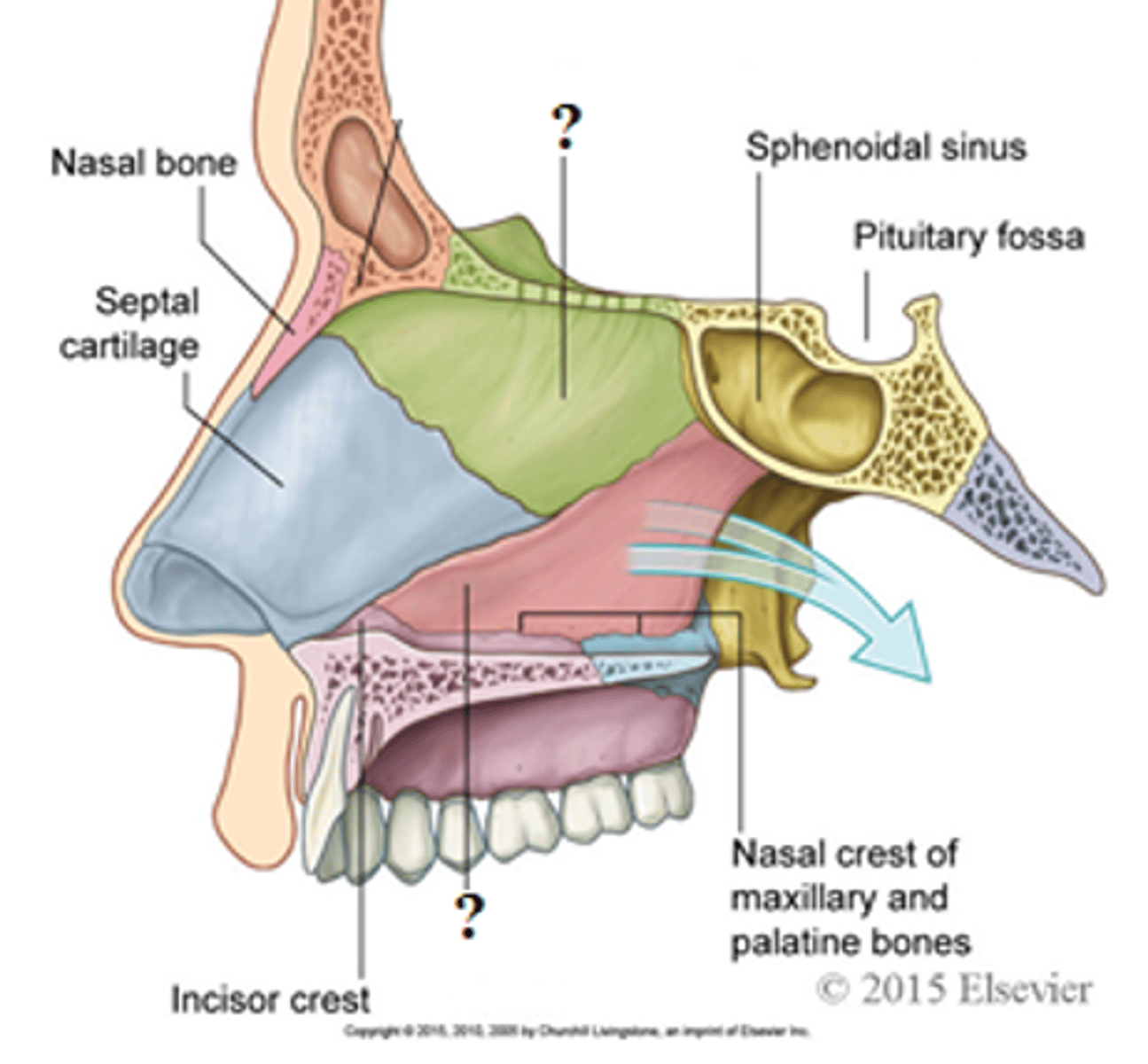
what 2 bones make up the lateral wall of the nasal cavity?
1. ethmoid bone (superior conchae and middle conchae)
2. inferior conchae
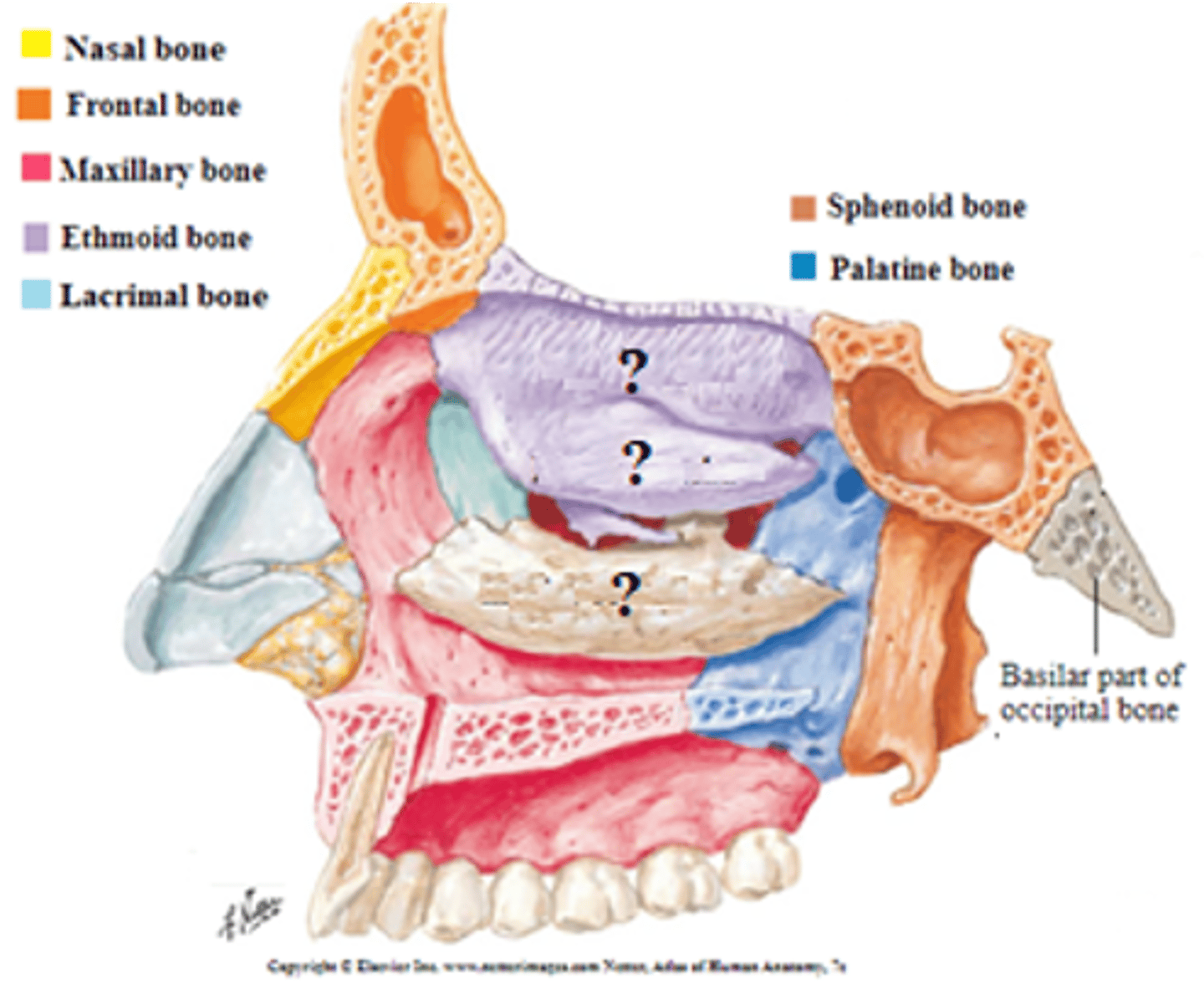
what bone makes up the roof of the nasal cavity?
(cribriform plate of the) ethmoid bone
what 2 bones make up the floor of the nasal cavity (hard palate)?
1. (palatine process of the) maxilla
2. (horizontal plate of the) palatine bone
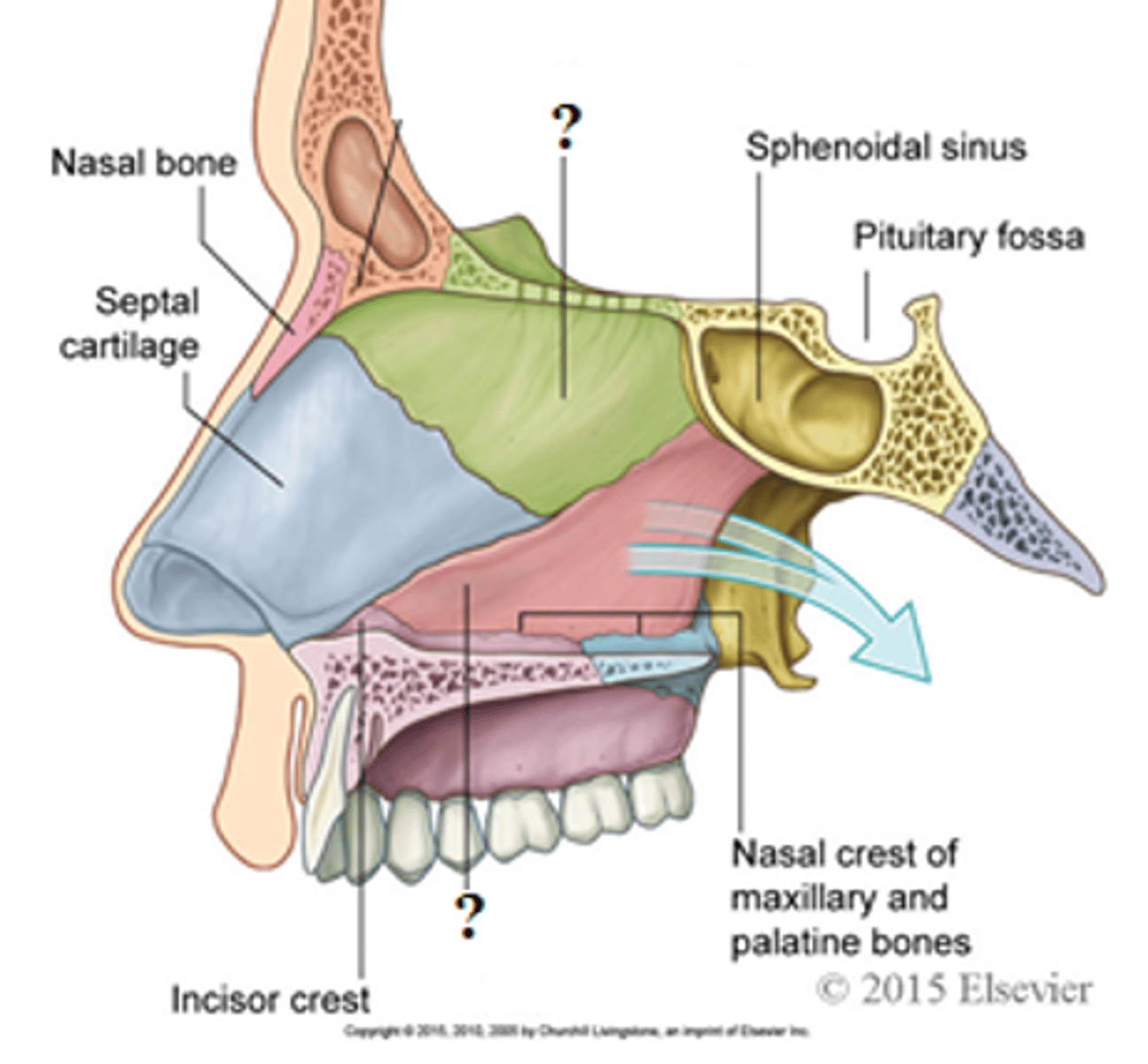
what are the 2 sections of the nasal cavity mucosa?
1. respiratory (inferior two-thirds) portion
2. olfactory (superior one-third) portion
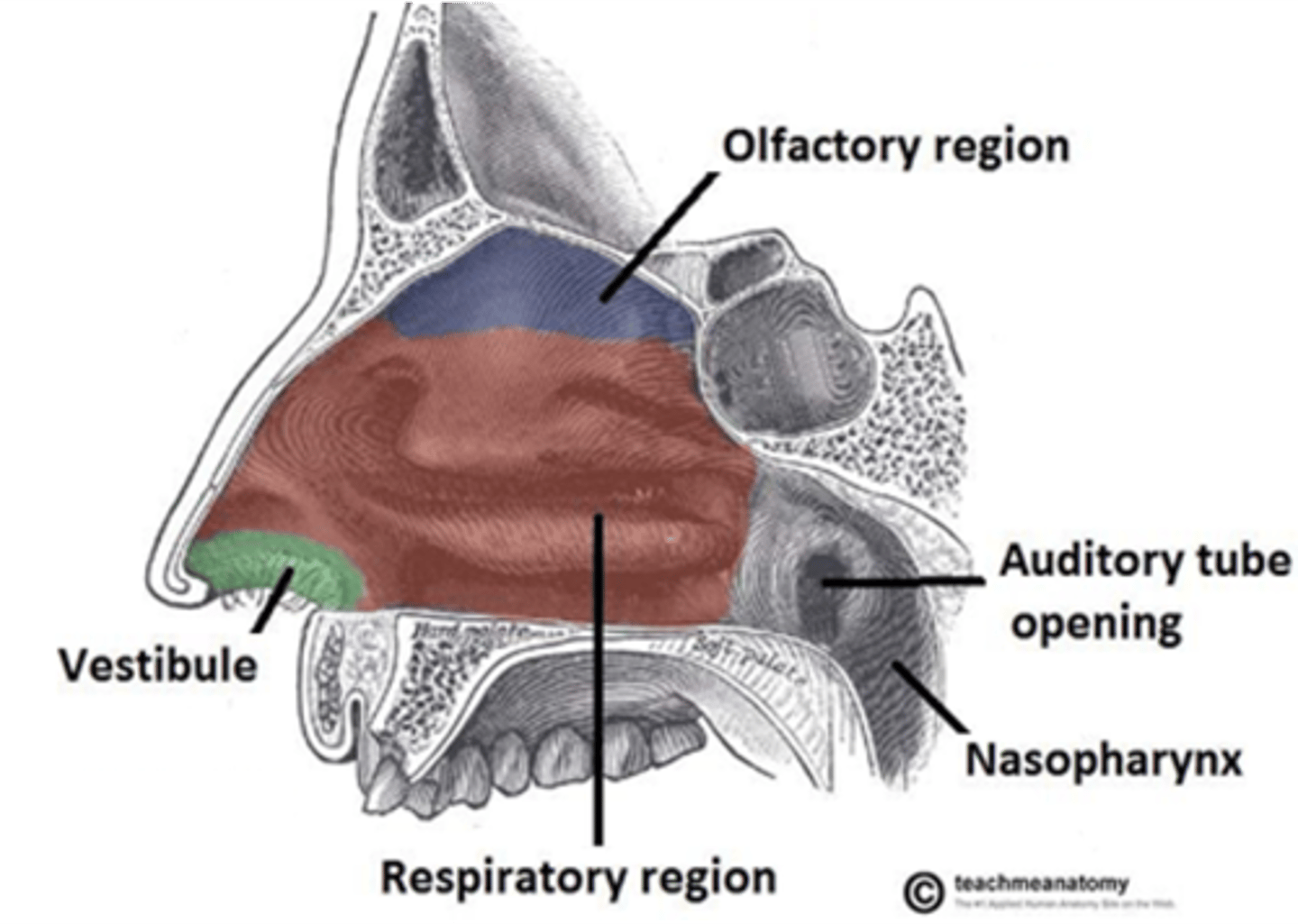
what is the function of the respiratory nasal mucosa?
warm and moisten air

what is the function of the olfactory nasal mucosa?
capture and trap odorants to be absorbed by the olfactory epithelium
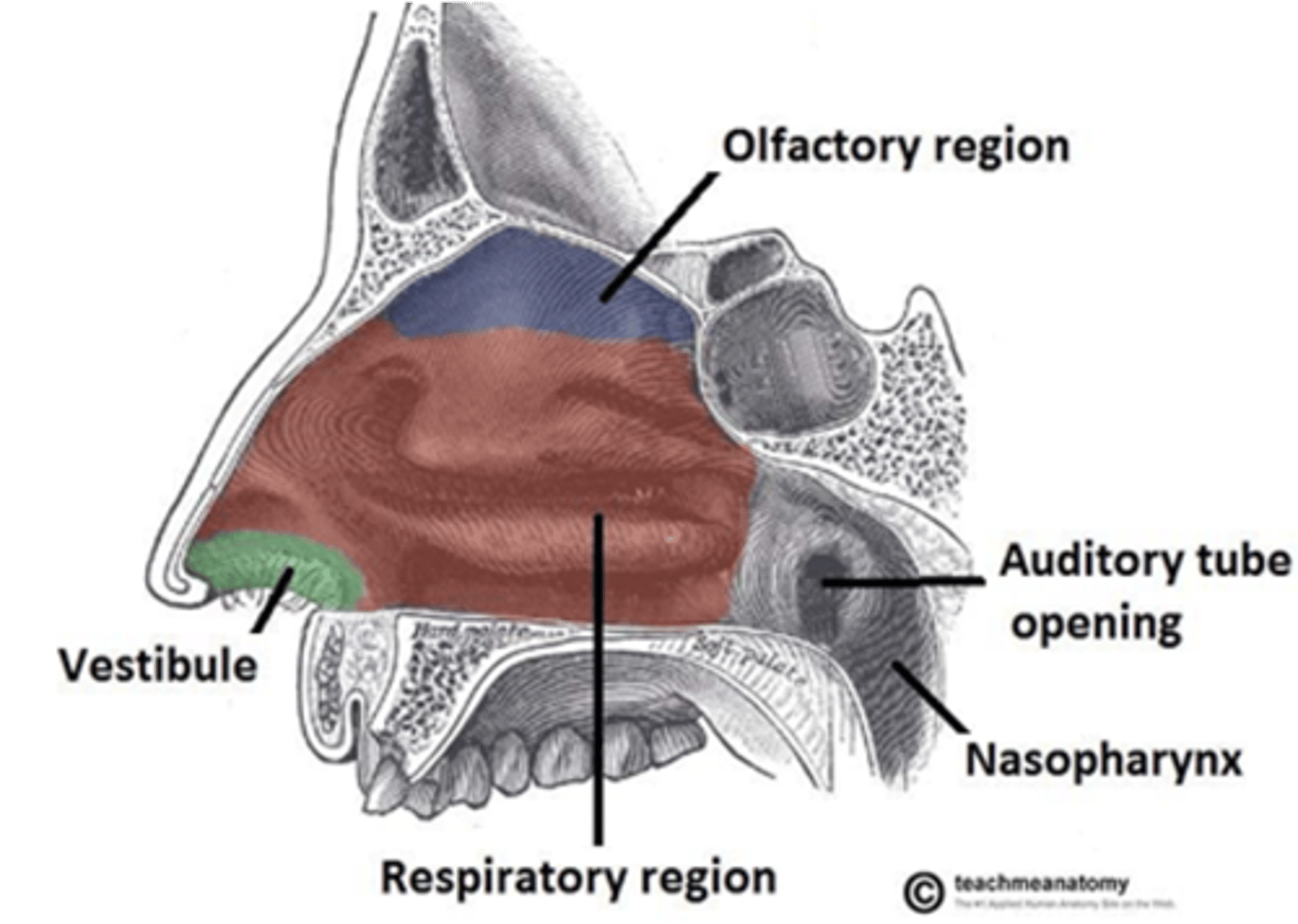
what is the name of the particles that enter into the nasal cavity through the nares or oropharynx and are absorbed into olfactory epithelium?
odorants
what is retronasal olfaction?
perception of smell from tastants that waft into the nasal cavity
(t/f) the olfactory nerve is an extension of the diencephalon
false; the olfactory nerve is an extension of the telencephalon
what is the functional component of the olfactory nerve?
sva
the olfactory nerve is made of a collection of central processes from (bipolar/multipolar/pseudounipolar) neurons
bipolar

what are the only cranial nerve cell bodies that are not housed in a ganglion?
cn i
(t/f) olfactory neurons are several million in number and unlike facial nerve neurons, they are long living
false; olfactory neurons are short lived
explain how olfaction occurs
1. odorants enter the olfactory epithelium and bind to first order olfactory neurons and generate an action potential
2. central axons ascend and synapse on second order neurons (mitral cells) in the glomerulus in the olfactory bulb
3. mitral cell axons form the olfactory tract and bifurcates into the lateral and medial olfactory stria
4. the tracts mainly target the primary olfactory cortex
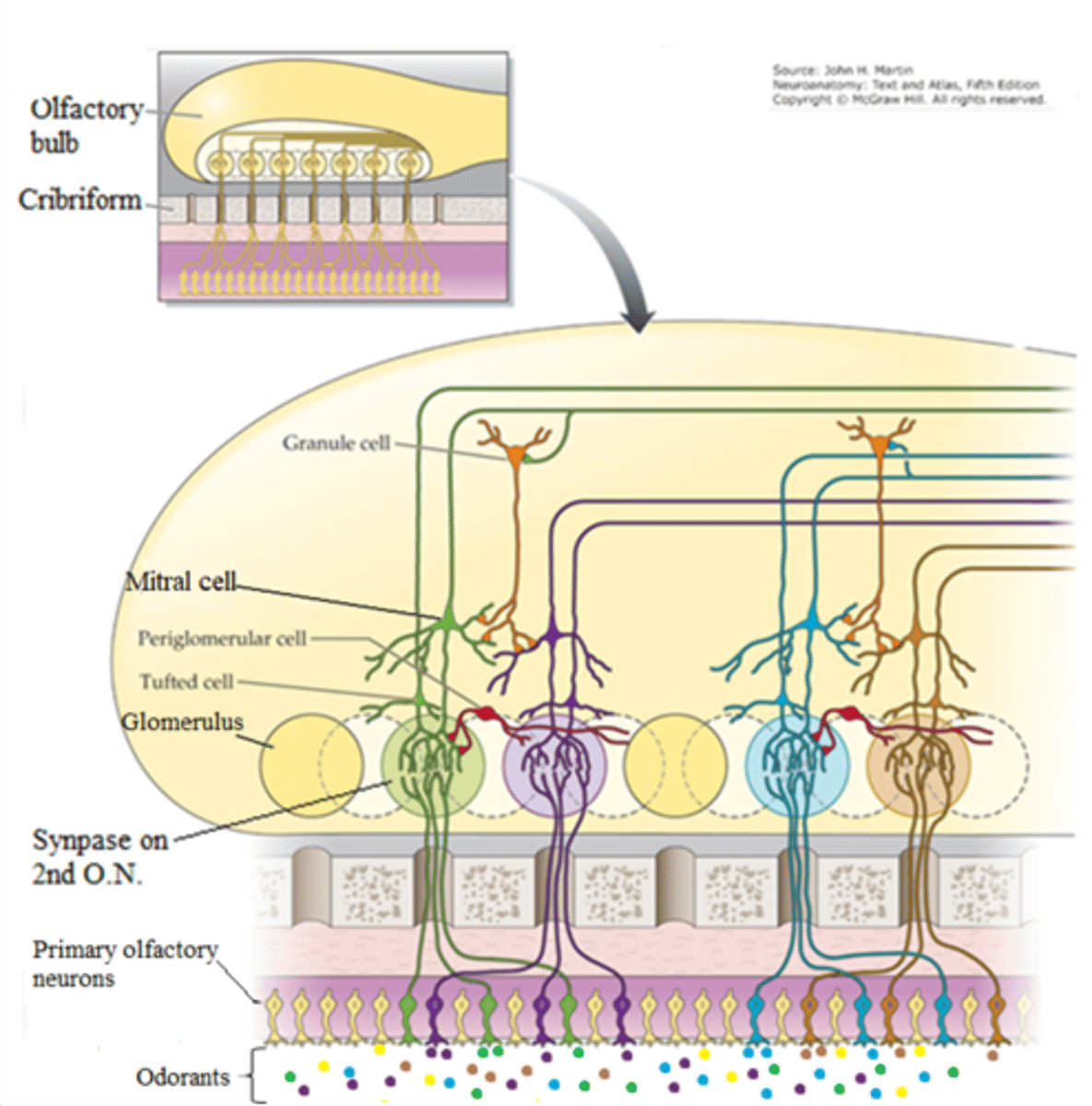
what are the second order neurons in the olfaction pathway?
mitral cells
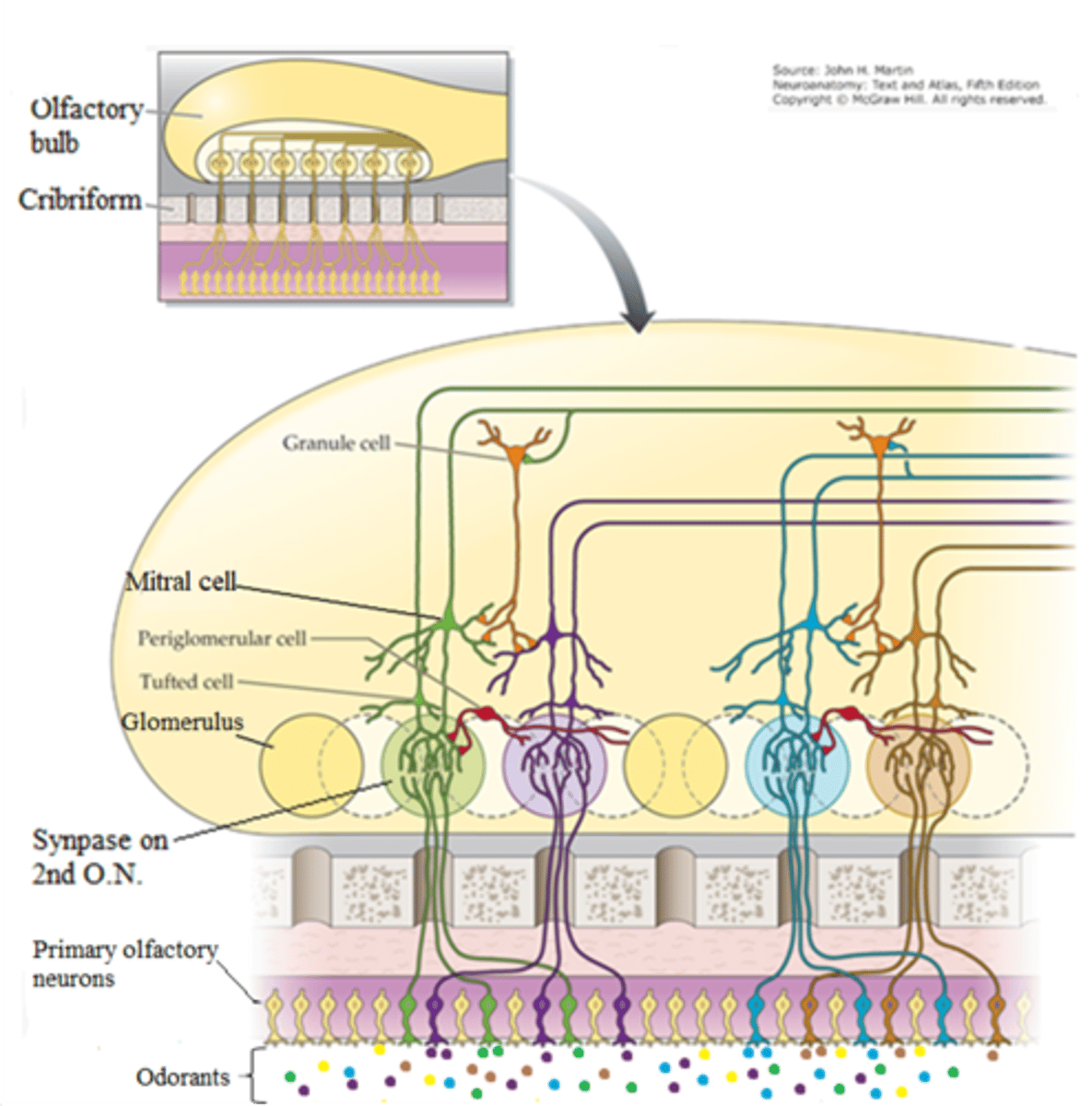
(t/f) each olfactory neuron binds to its one specific odorant, but olfactory neurons are able to synapse on different glomeruli
false; each olfactory neuron binds to its one specific odorant AND synapse on their own specific glomerulus
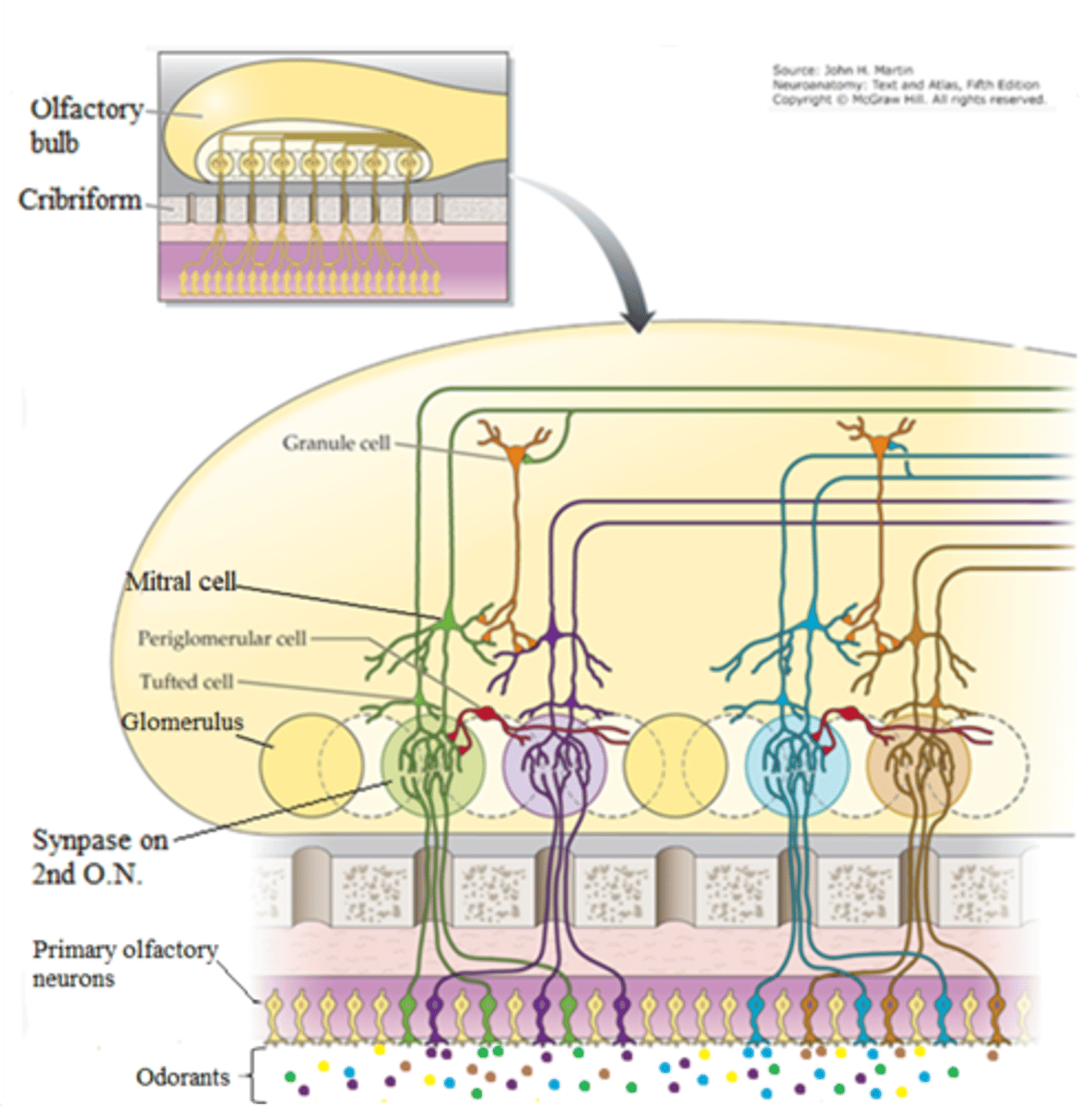
what are the 5 areas of the primary olfactory cortex?
1. anterior olfactory nucleus
2. amygdala
3. olfactory tubercle
4. piriform cortex
5. rostral entorhinal cortex
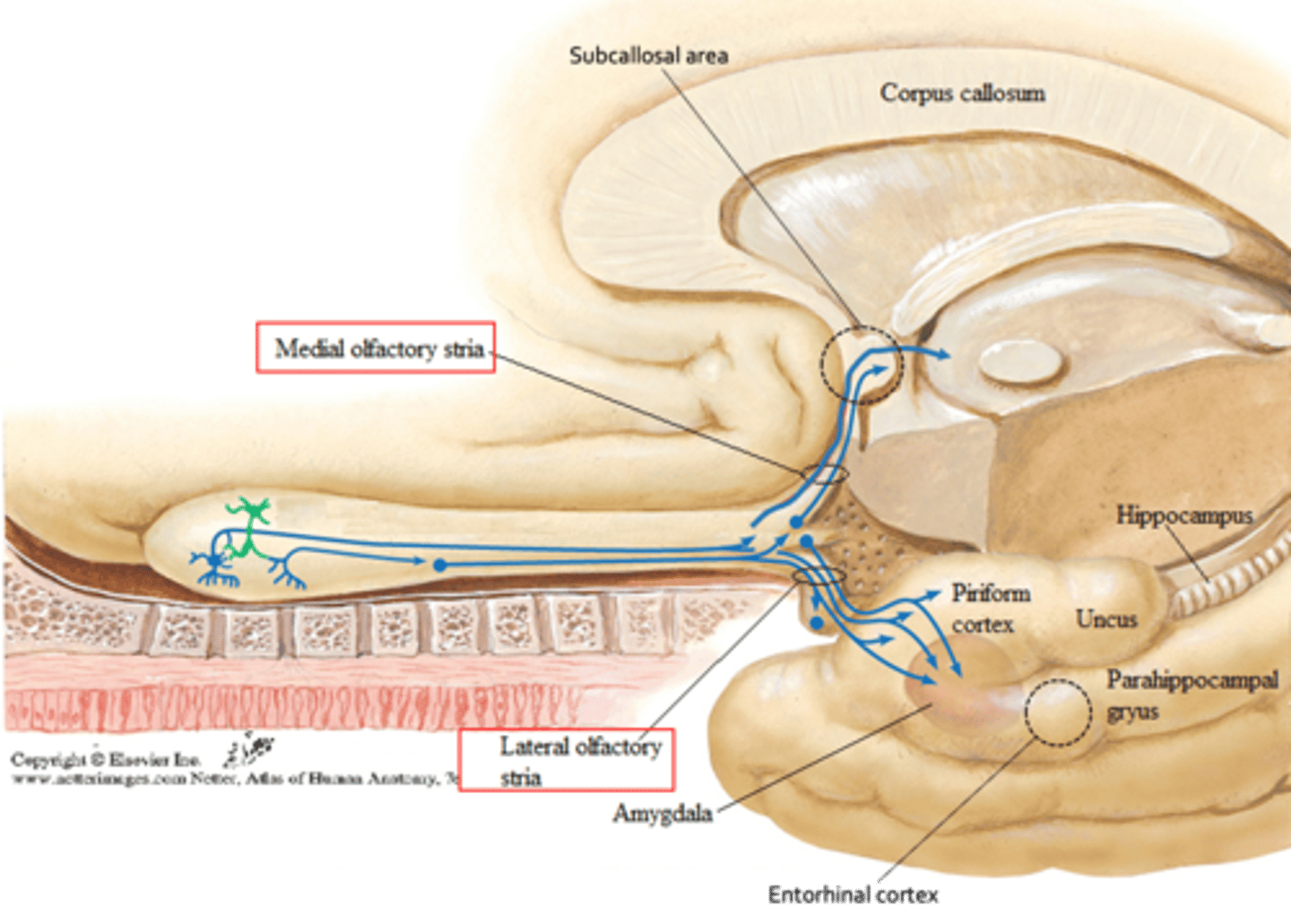
(t/f) projections of the mitral cells go directly to the cerebral cortex
true; these cells will not stop in the thalamus like all other sensory neurons

which area of the primary olfactory cortex undergoes structural changes in Alzheimer's (causing anosmia)?
anterior olfactory nucleus
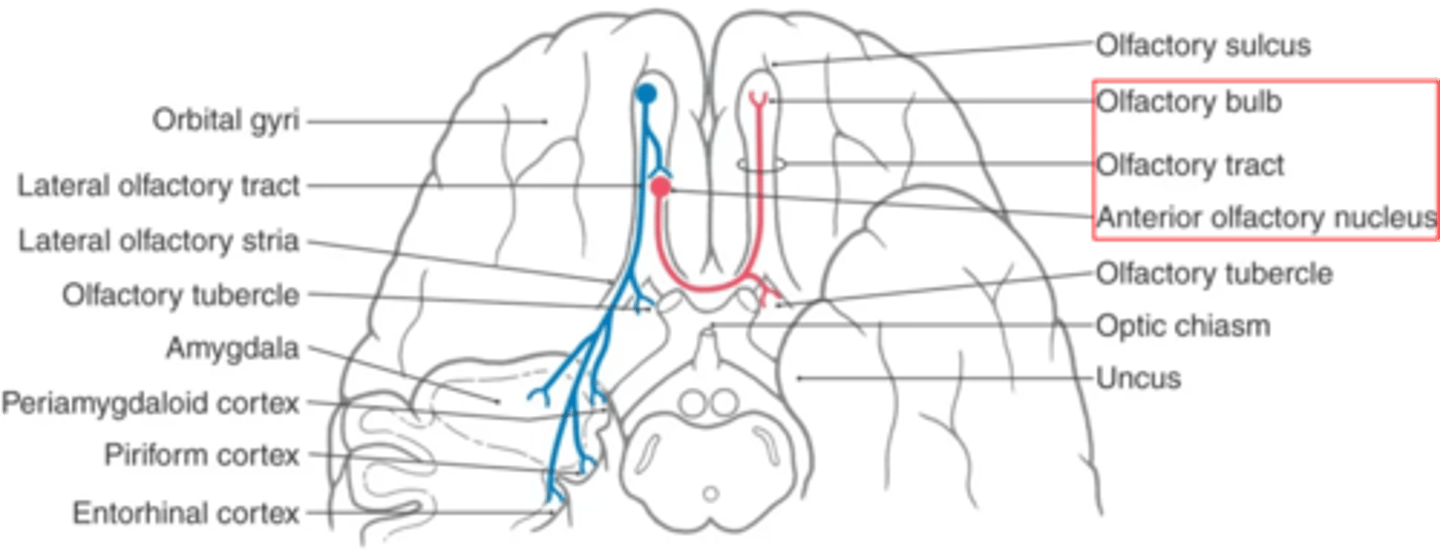
what are the group of neurons inside the olfactory bulb that extend axons that cross the midline and target mitral cells in the contralateral olfactory bulb?
anterior olfactory nucleus
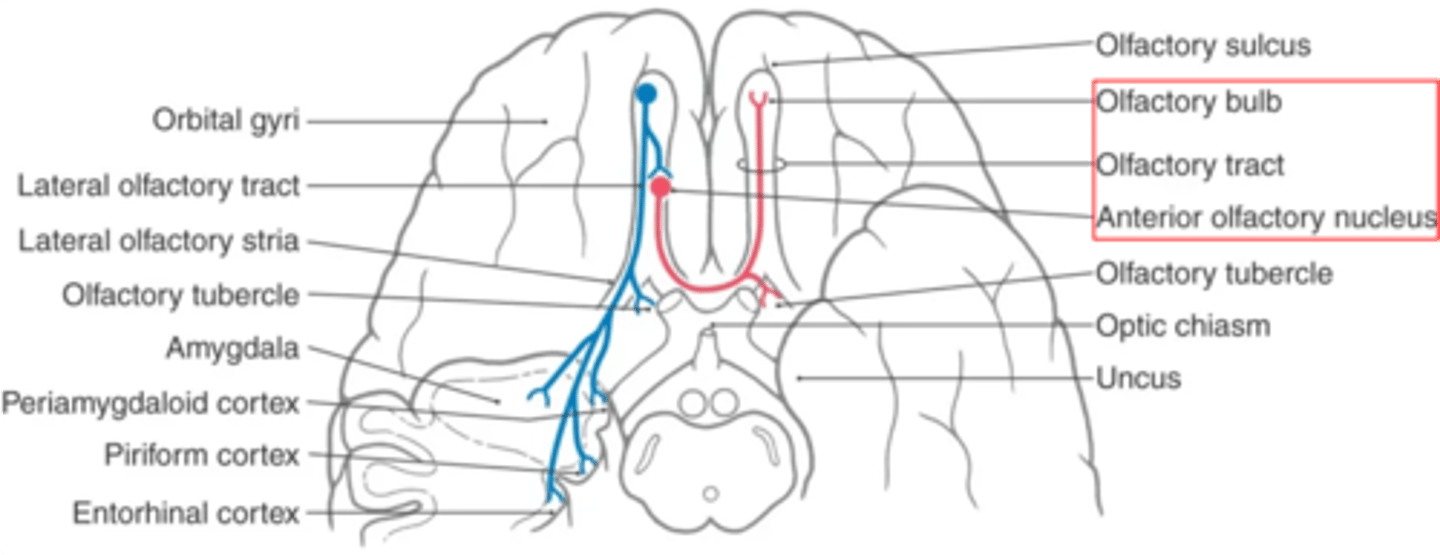
which area of the primary olfactory cortex function to amplify the perception of smell?
anterior olfactory nucleus

which cortex is targeted by the medial olfactory stria?
orbitofrontal cortex
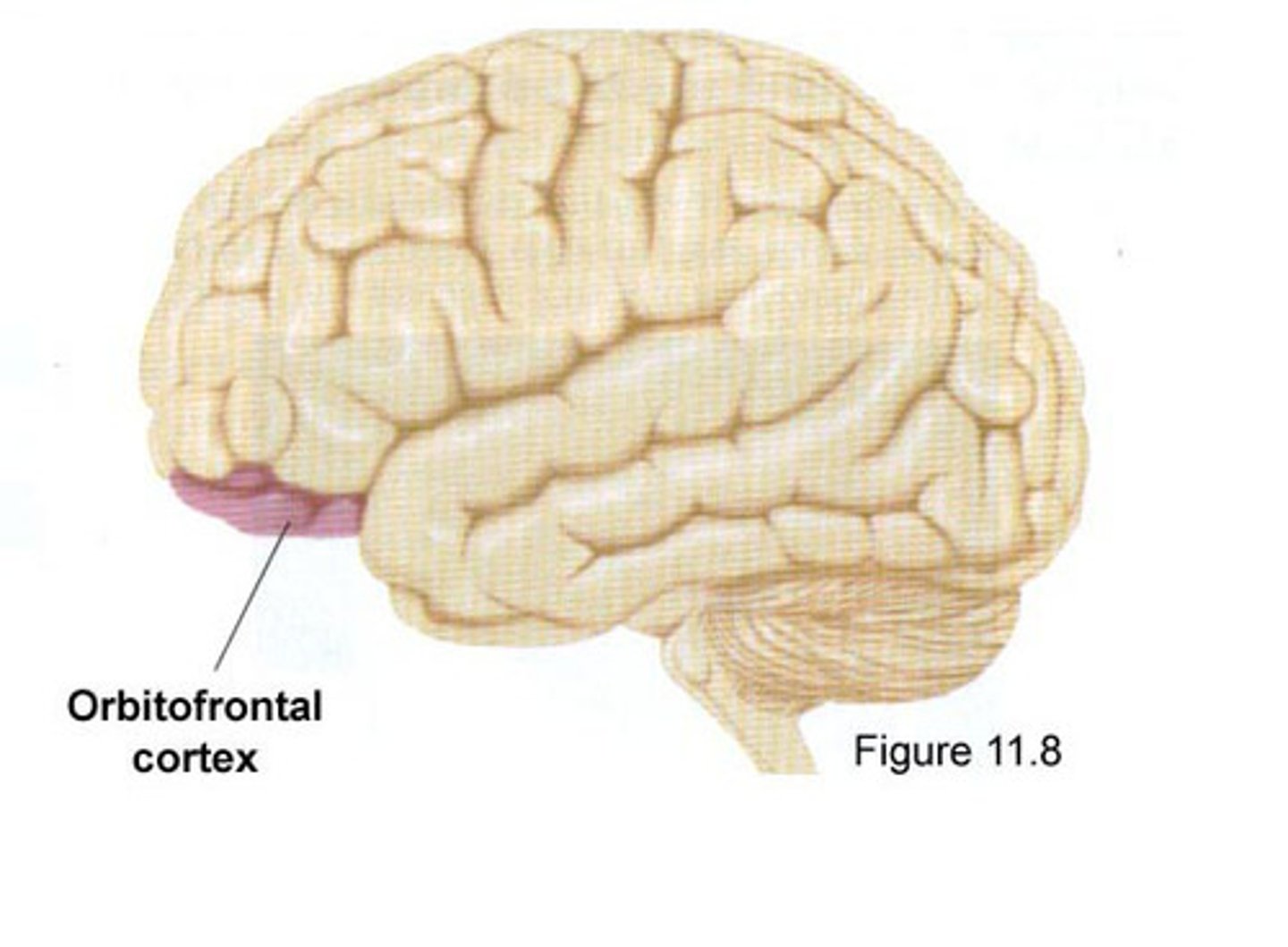
which cortex is necessary for odor discrimination?
orbitofrontal cortex
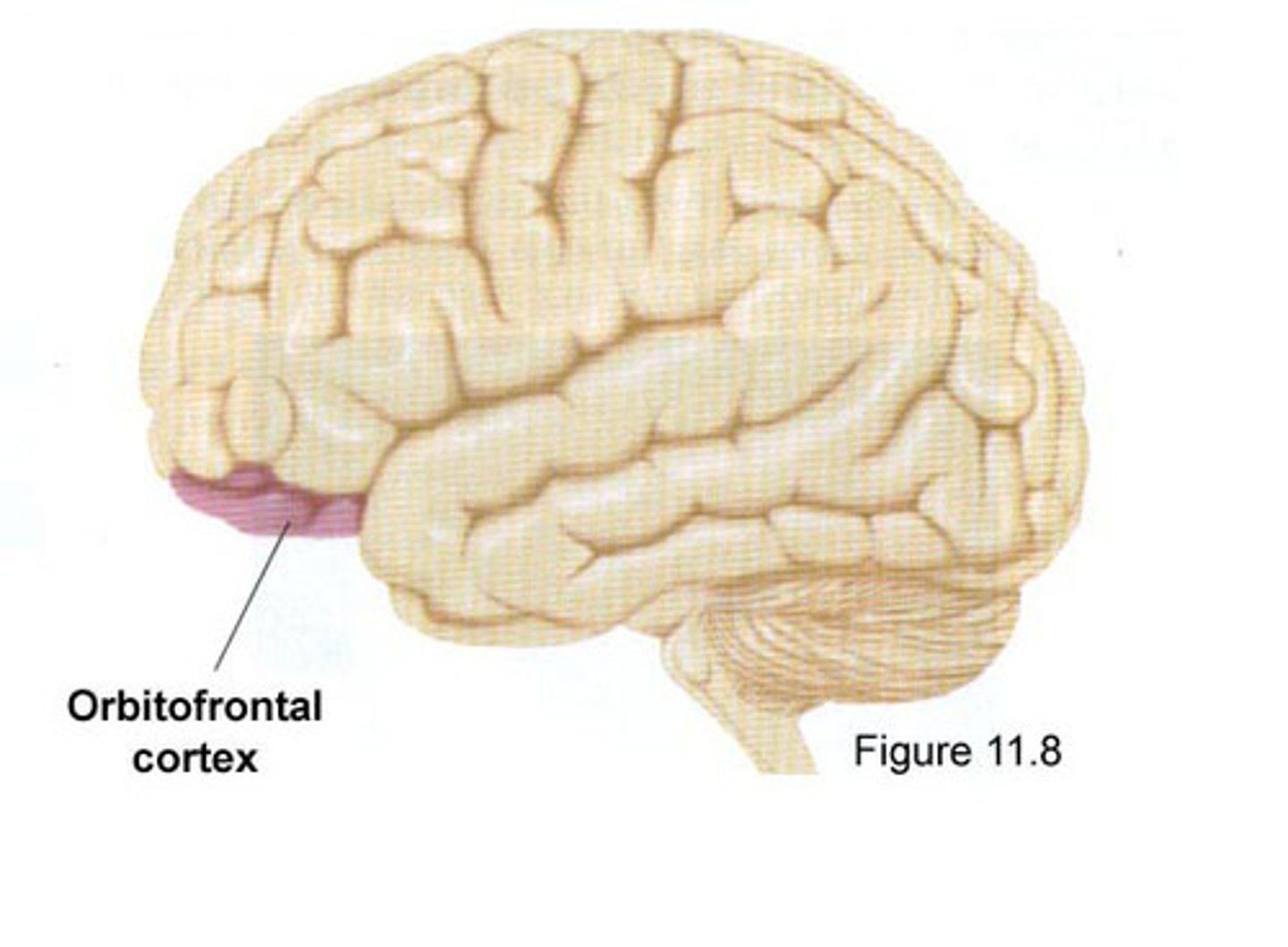
what 4 areas of the primary olfactory cortex are targeted by the lateral olfactory stria?
1. piriform cortex
2. amygdala
3. olfactory tubercle
4. entorhinal cortex
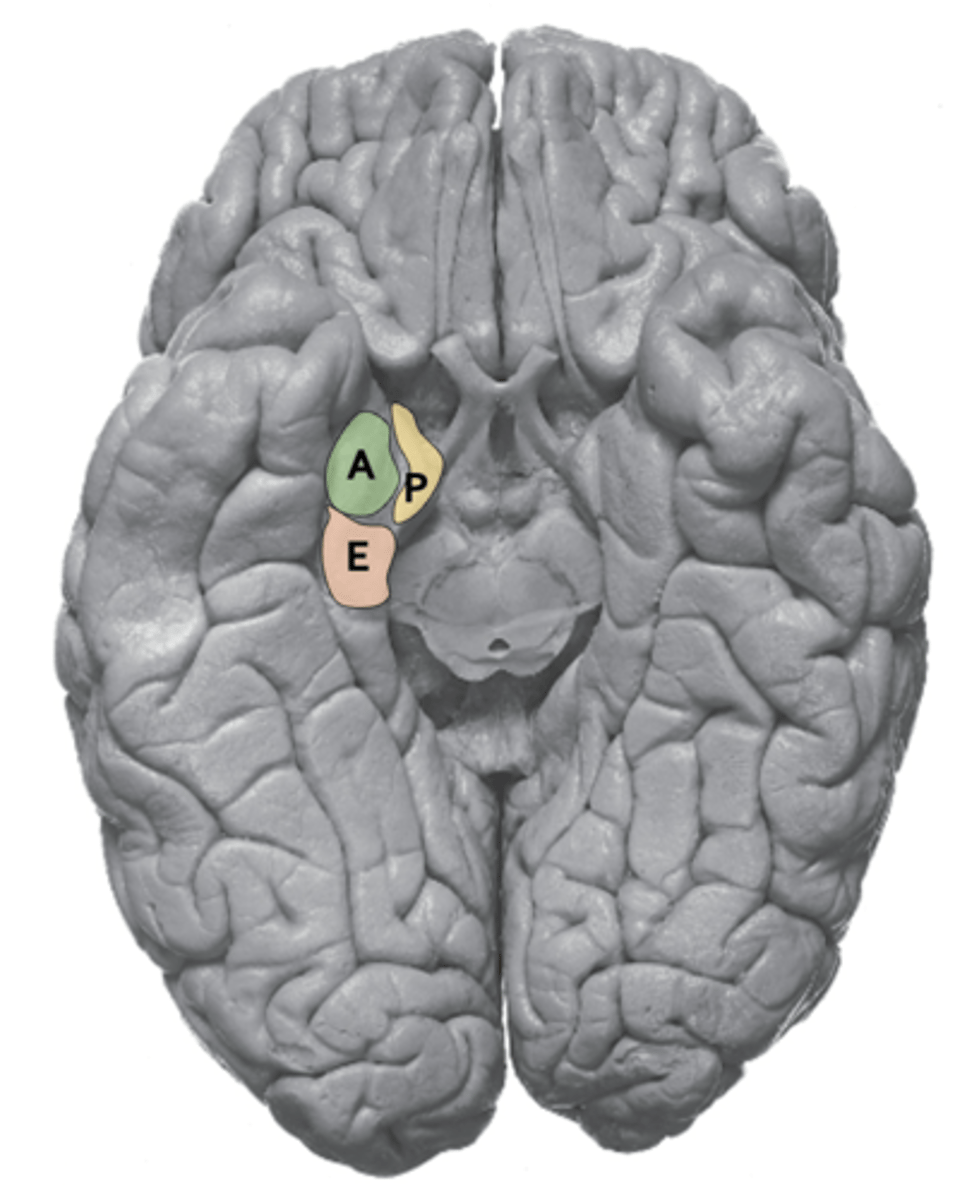
which area of the primary olfactory cortex is crucial for initiating odor perception and discerning smells from each other?
piriform cortex
which area of the primary olfactory cortex works with the amygdala and entorhinal cortex for having an emotional memory with smells?
piriform cortex
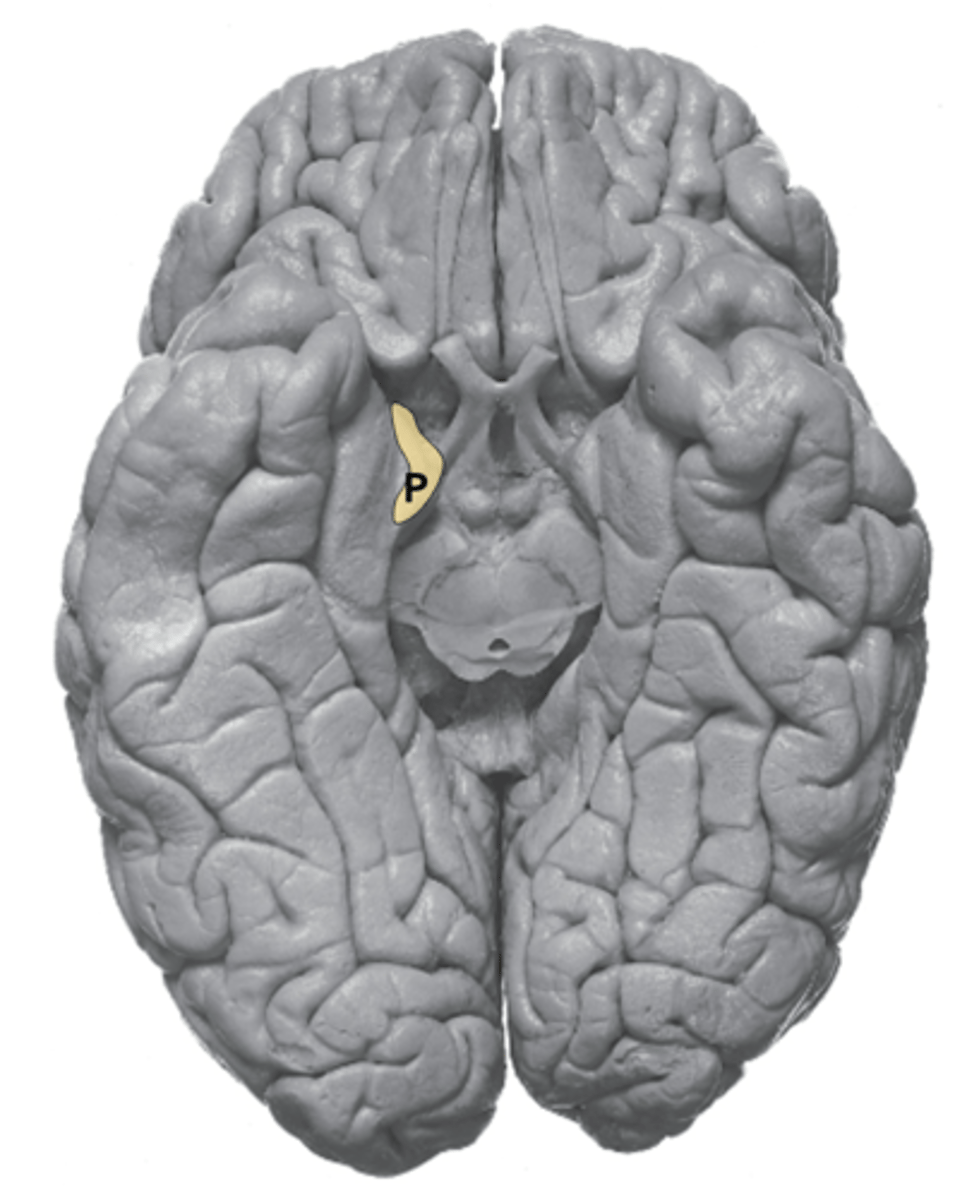
what 2 areas of the primary olfactory cortex evokes an emotional and behavioral response to smells?
1. amygdala
2. olfactory tubercle

which area of the primary olfactory cortex projects to the hippocampus and involved in memories?
entorhinal cortex
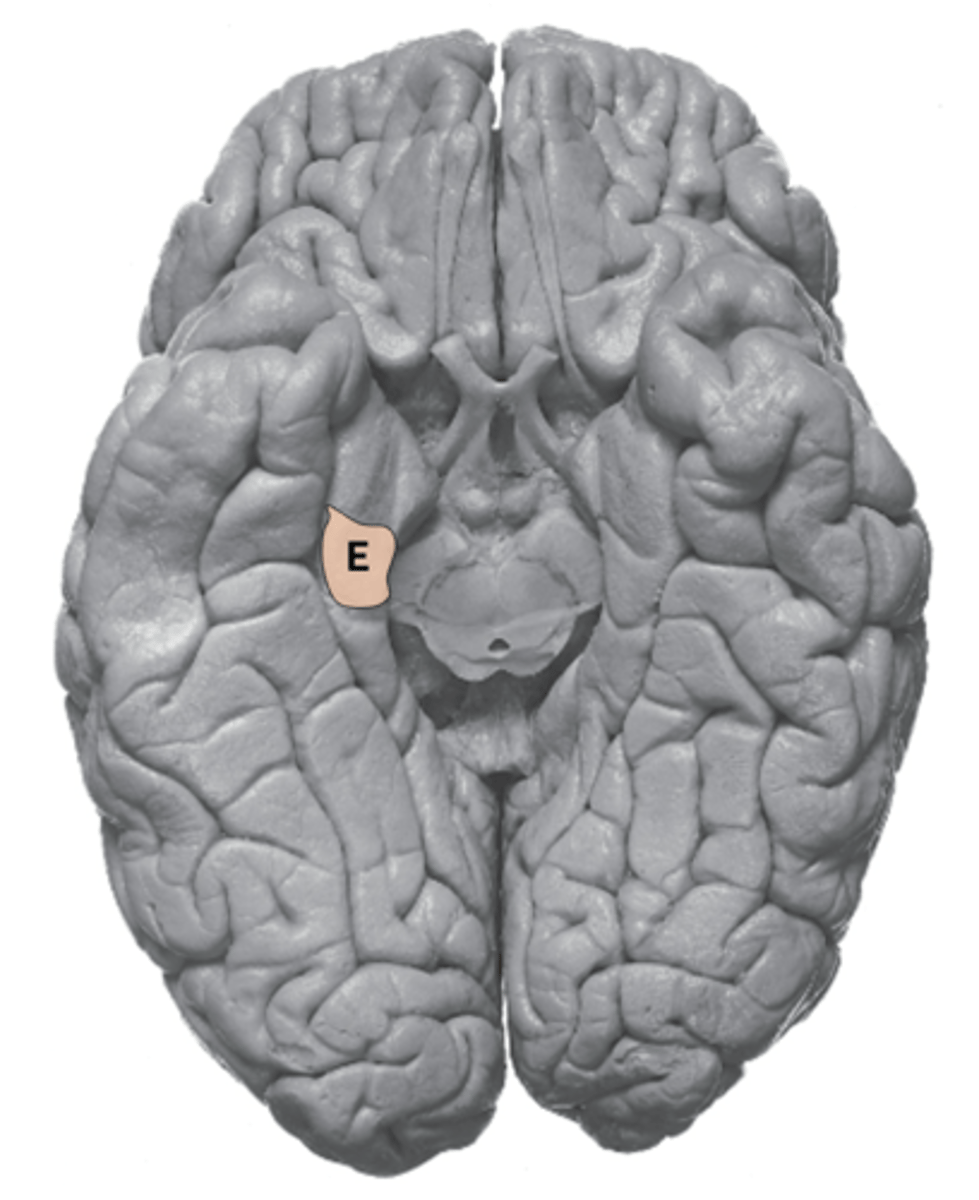
what condition is known as the inability to smell caused by head trauma, sinus and nasal infections, smoking, cocaine, and neurodegenerative diseases?
anosmia
(t/f) the gustatory system is primarily organized to identify foods just like smell and vision
false; the gustatory system is organized to identify nutrients or harmful agents while smell and vision are mainly responsible for identifying foods
what are the 5 taste sensations?
1. sweet
2. savory (umami)
3. salty
4. sour
5. bitter
what 2 taste qualities will the brain identify to maintain energy stores?
1. sweet
2. savory (umami)
what taste quality will the brain identify to maintain electrolyte balance?
salty
what 2 taste qualities will the brain identify to maintain pH?
1. sour
2. bitter
what taste quality will the brain identify to detect toxins?
bitter
(t/f) papillae (with taste buds) can be found on the tongue, the soft palate, the hard palate, the pharynx, and the larynx
false; papillae are not found on the soft palate, the hard palate, the pharynx, and the larynx. however, taste buds are found on the tongue, soft palate, the pharynx, and the larynx, but NOT the hard palate
what are the 4 kinds of lingual papillae?
1. circumvallate
2. foliate
3. fungiform
4. filiform
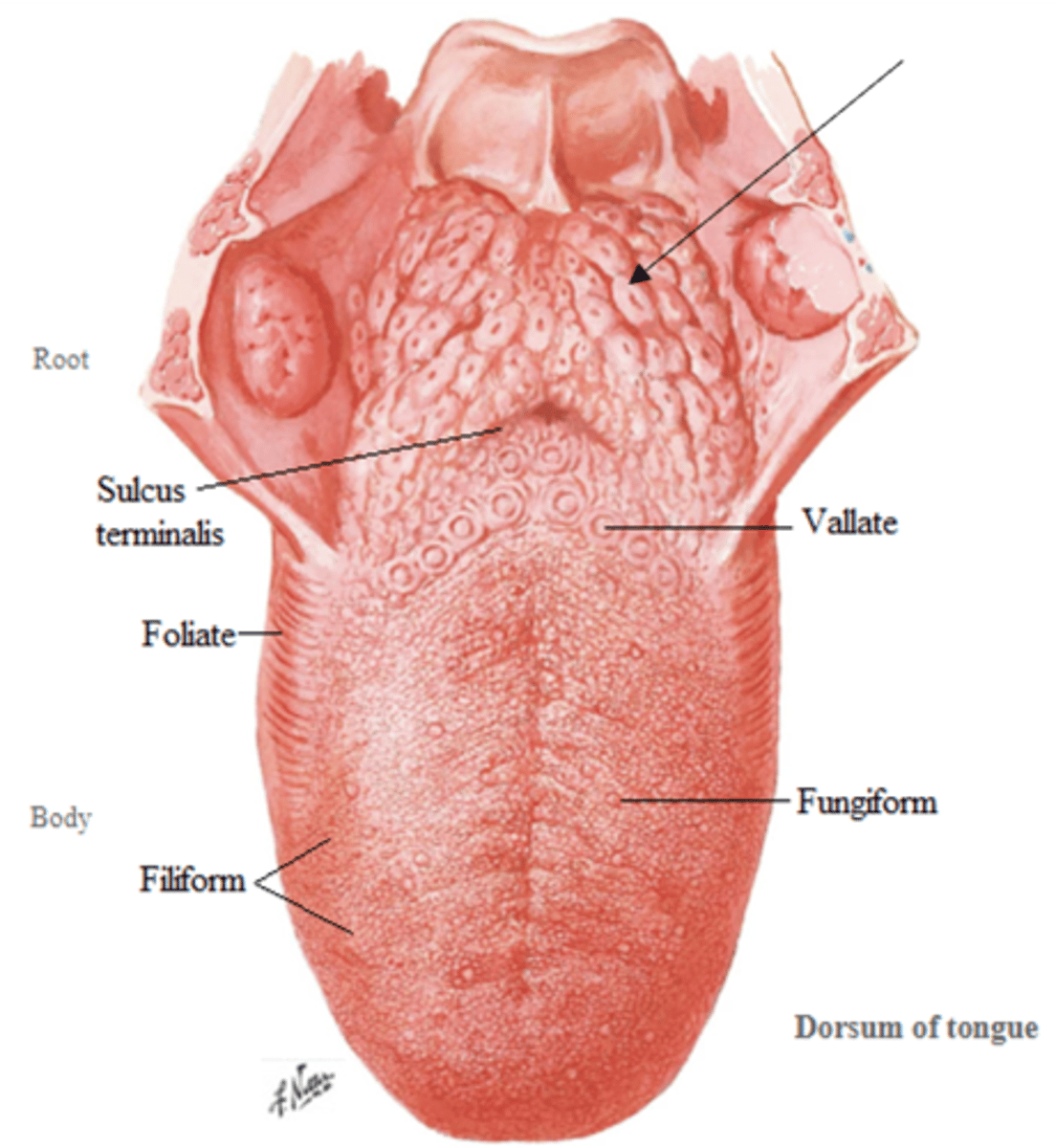
what lingual papillae lack taste buds and create friction/grip for food?
filiform
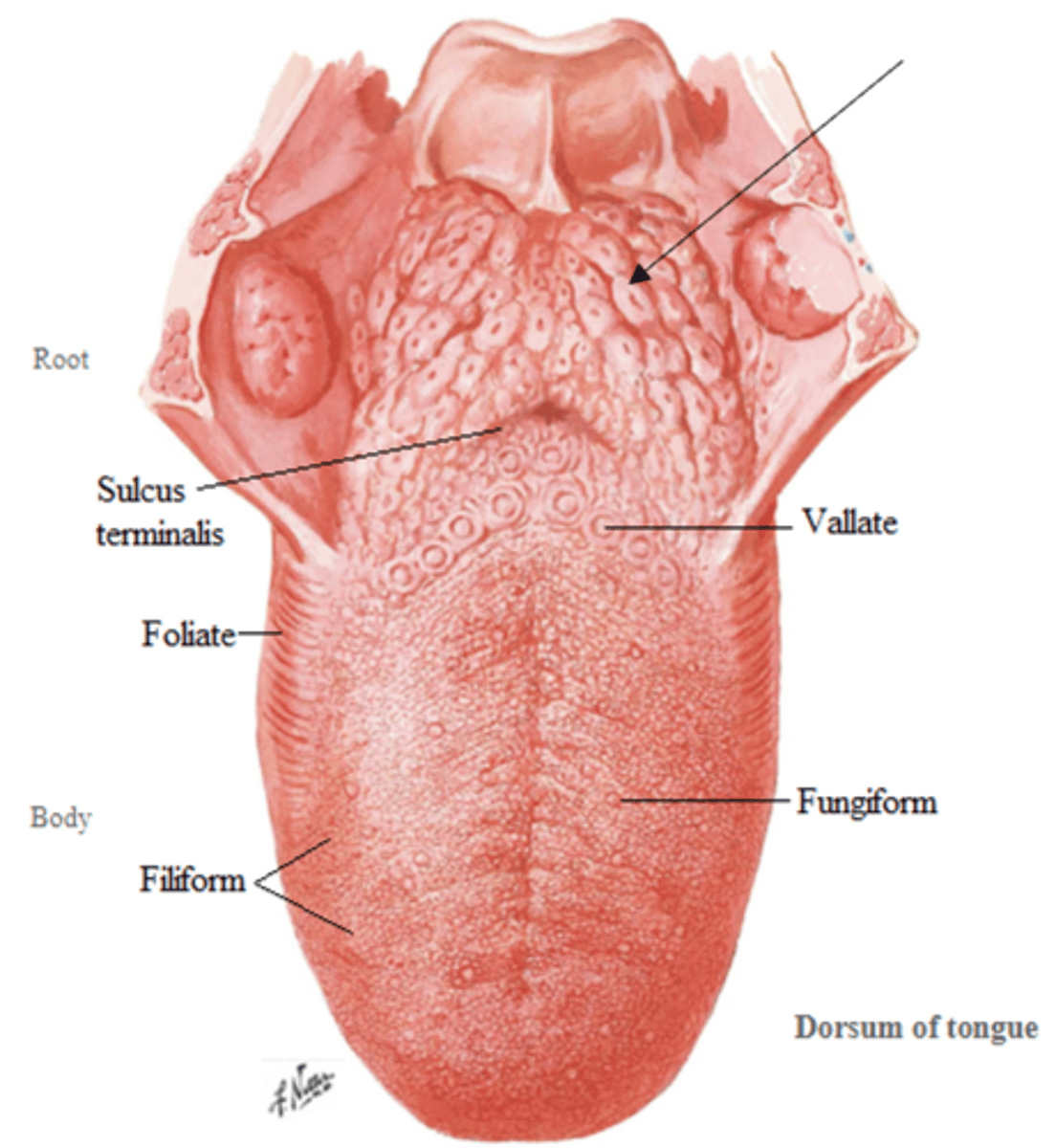
(t/f) protrusions located in the posterior most portion of the tongue are lingual papillae
false; these are lingual tonsils

what are the 3 types of cells that make up a taste bud?
1. taste receptor (gustatory) cells
2. basal cells
3. supporting cells
what taste bud cells bind to tastants to activate?
taste receptor (gustatory) cells
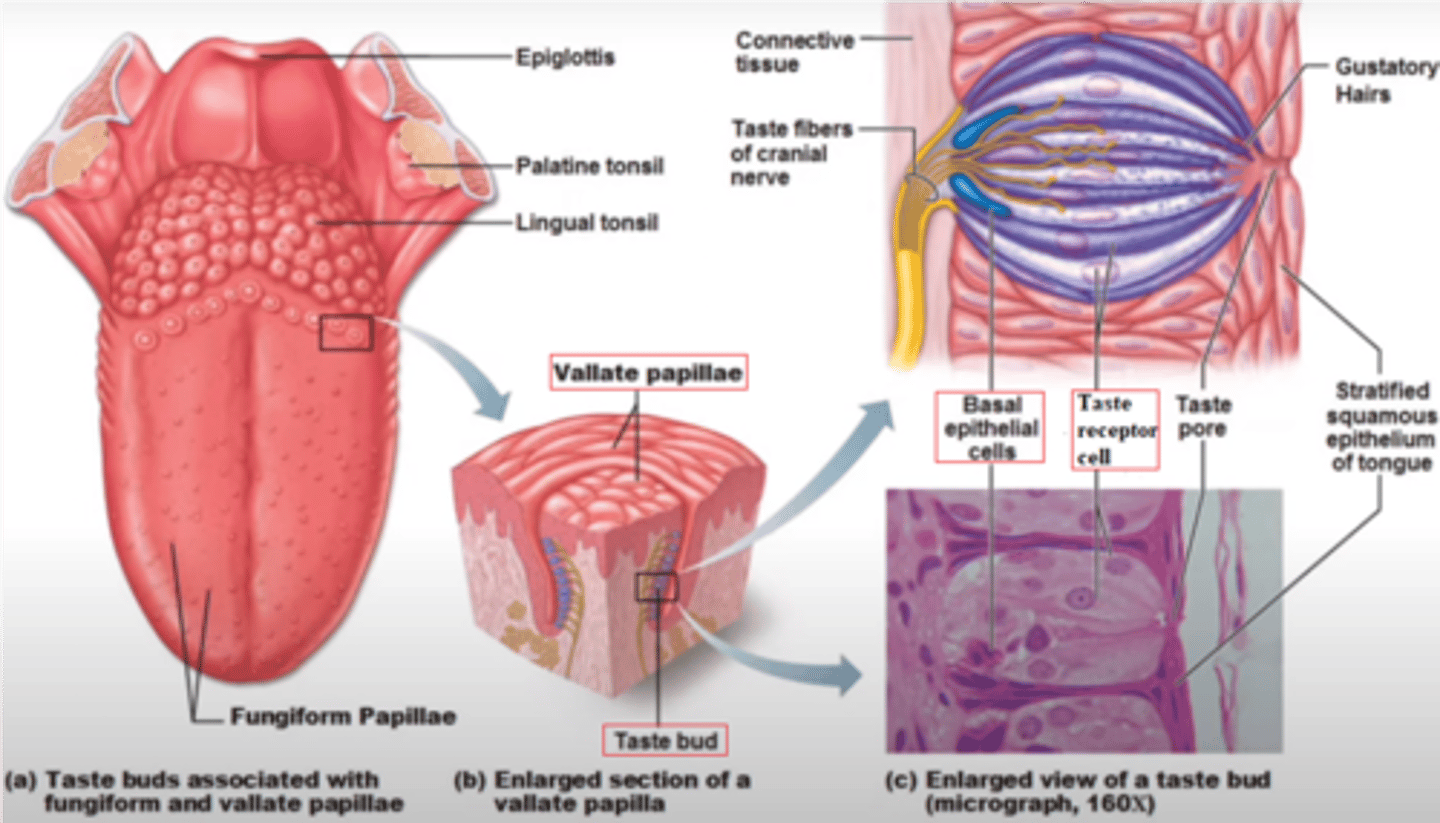
what taste bud cells are the stem cells?
basal cells
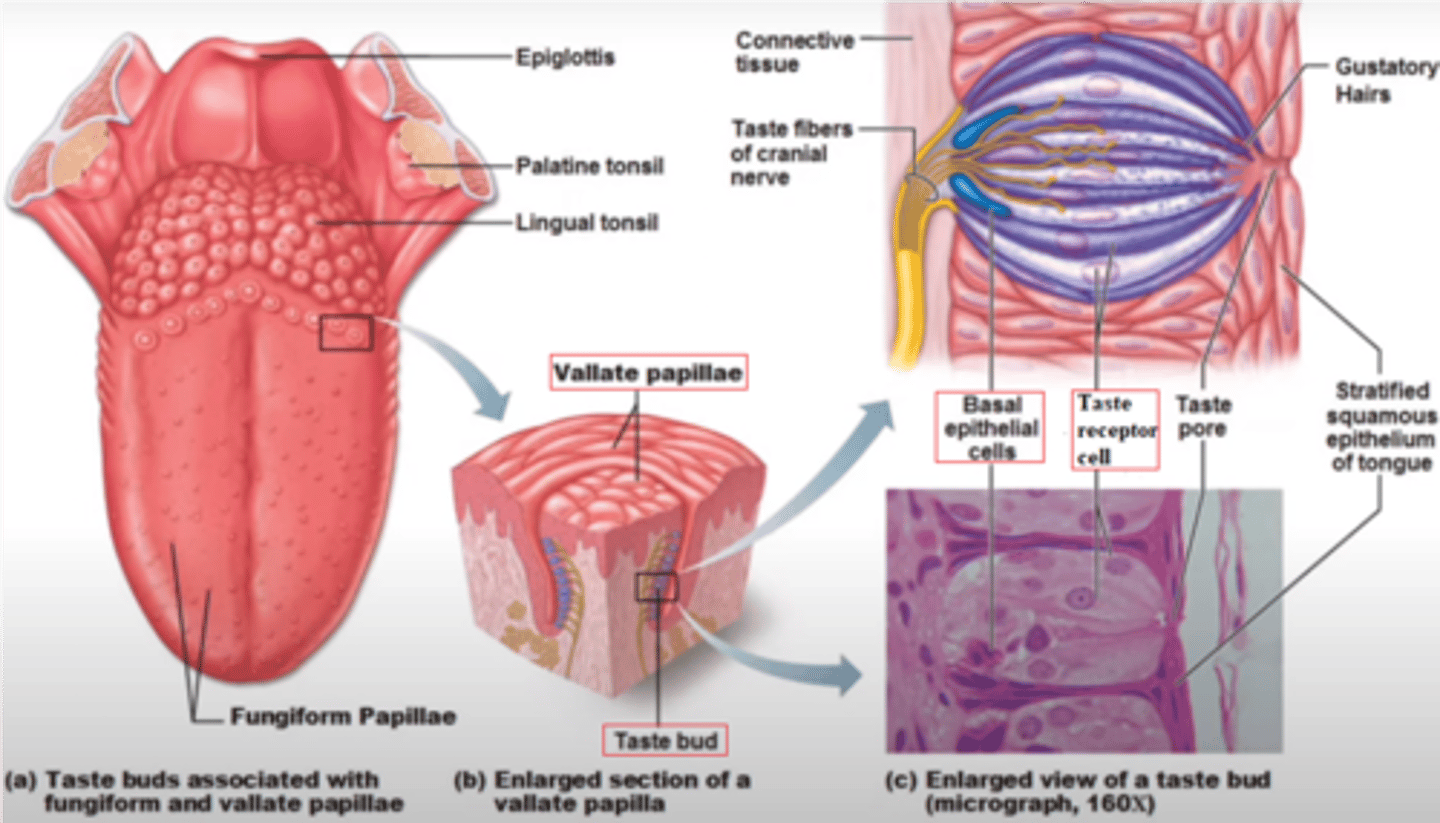
(t/f) gustatory cells are more short-lived than olfactory neurons
true
what 3 cranial nerves innervate taste receptor cells?
1. cn vii via chorda tympani (anterior two-thirds of tongue)
2. cn ix (posterior one-third of tongue)
3. cn x (root of tongue)
where are the facial nerve sensory cell bodies located for taste?
geniculate ganglion
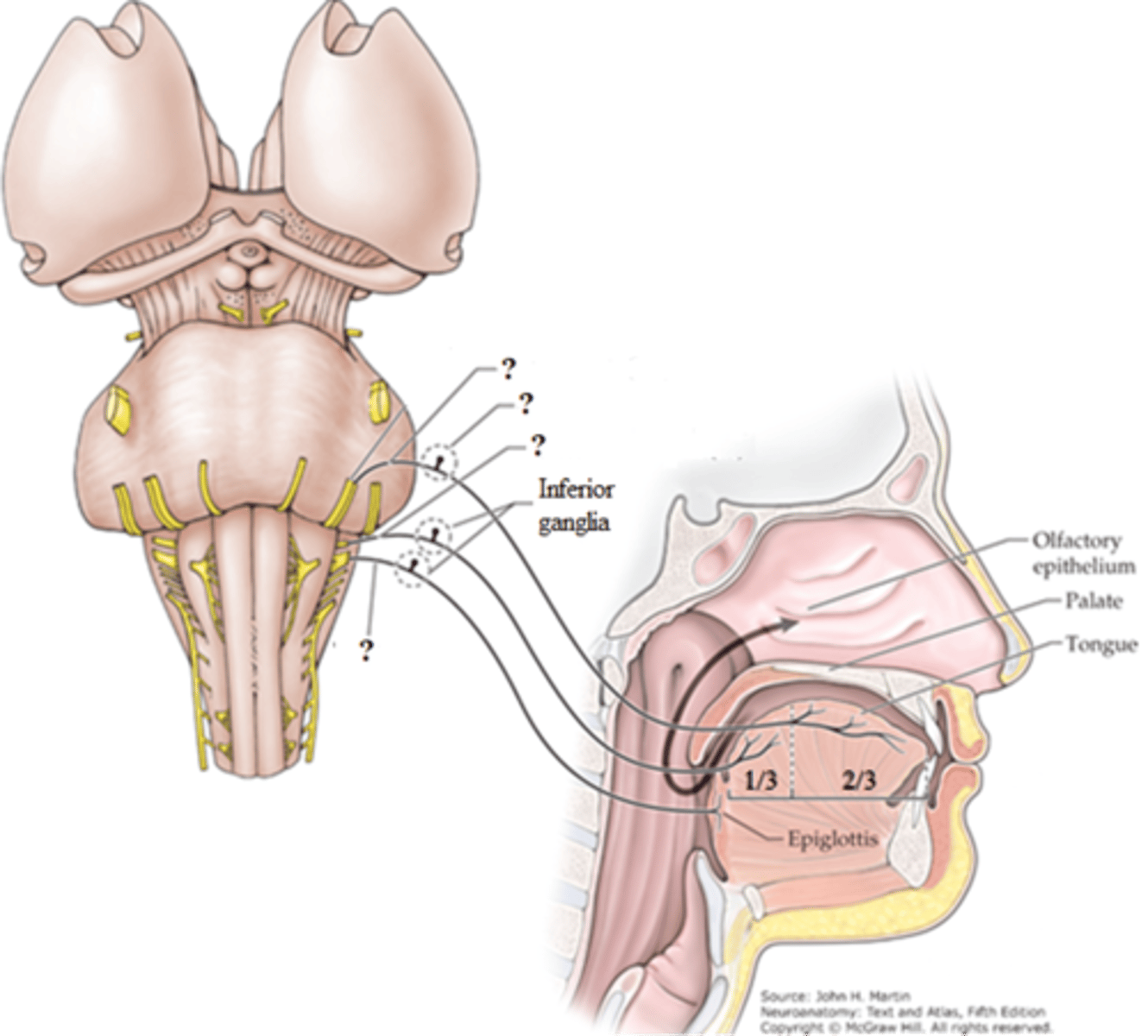
where are the glossopharyngeal nerve sensory cell bodies located for taste?
inferior (petrosal) ganglion
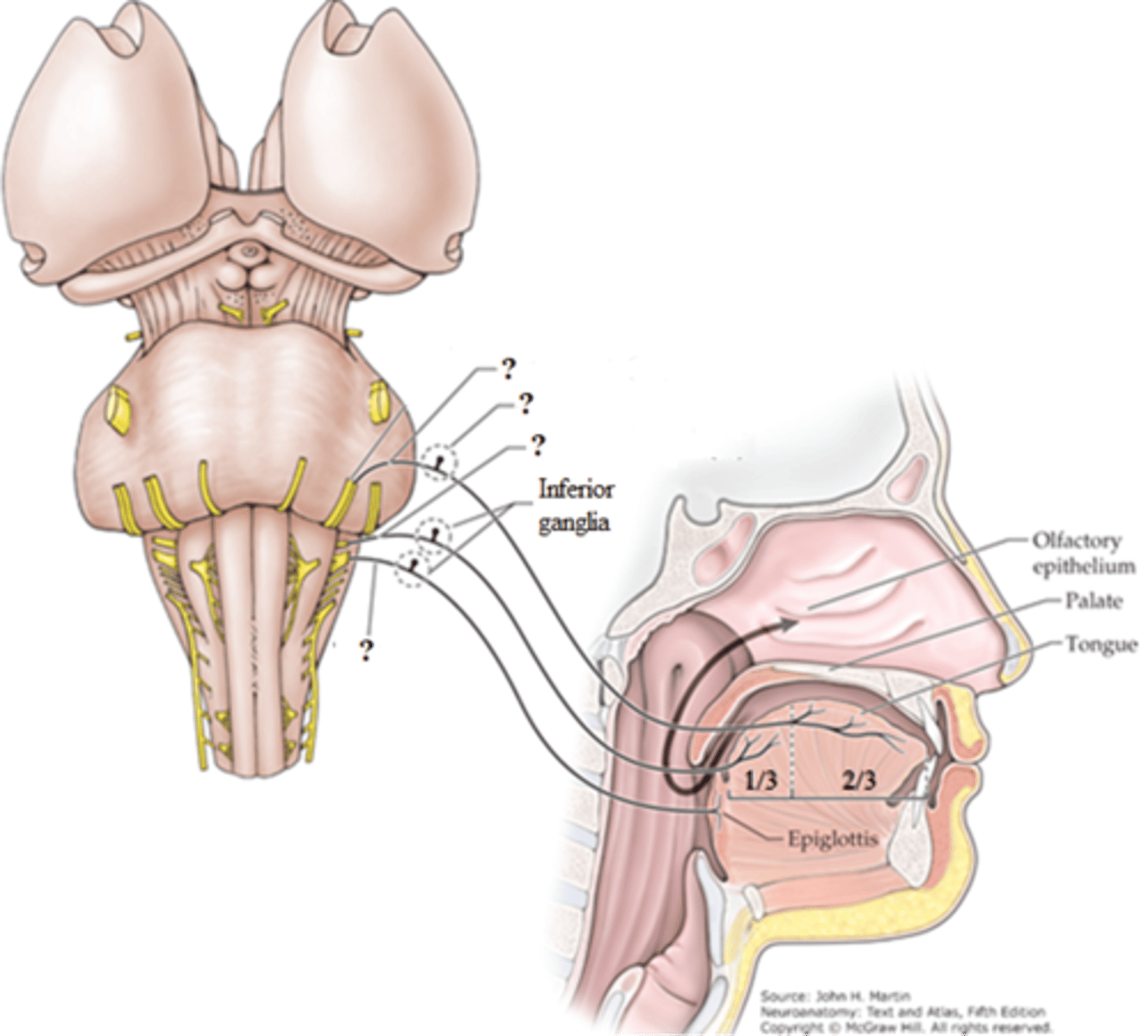
where are the vagus nerve sensory cell bodies located for taste?
inferior (nodose) ganglion

explain how taste sensation occurs
1. tastants are absorbed by first order neurons (gustatory cells)
2. visceral afferents of cn vii, ix, and x enter the brainstem as the solitary tract (tractus soliatarius) and synapse in the rostral solitary nucleus on second order neurons
3. axons then travel to and synapse at to the VPM of the thalamus
4. projections of the VPM then go to the insula as well as the amygdala, hippocampus, and orbitofrontal cortex

which section of the solitary nucleus contains second order taste neurons?
rostral solitary nucleus
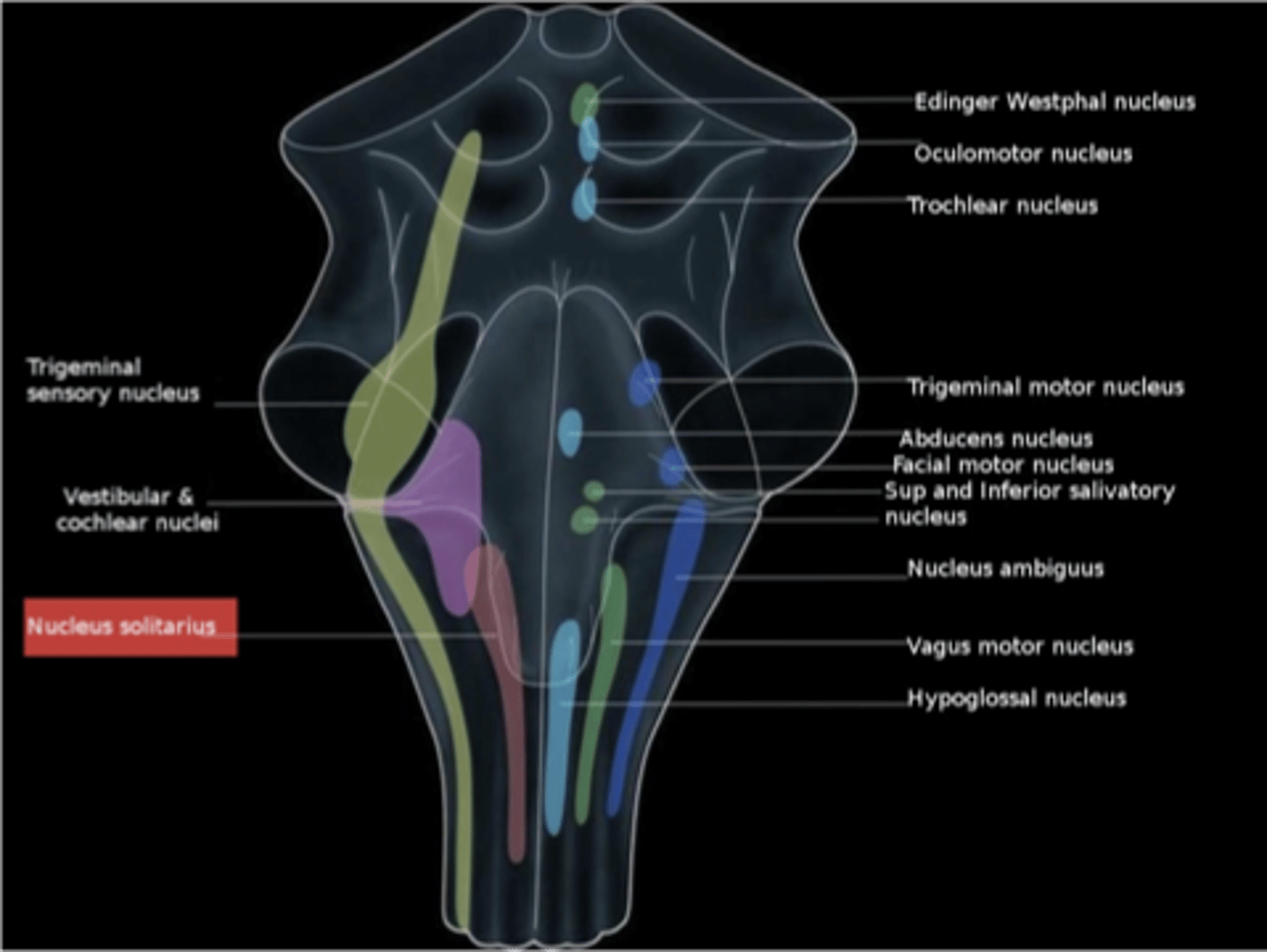
which section of the solitary nucleus is necessary for cardiopulmonary output?
caudal solitary nucleus; this is why a lesion in the caudal medulla can be life threatening
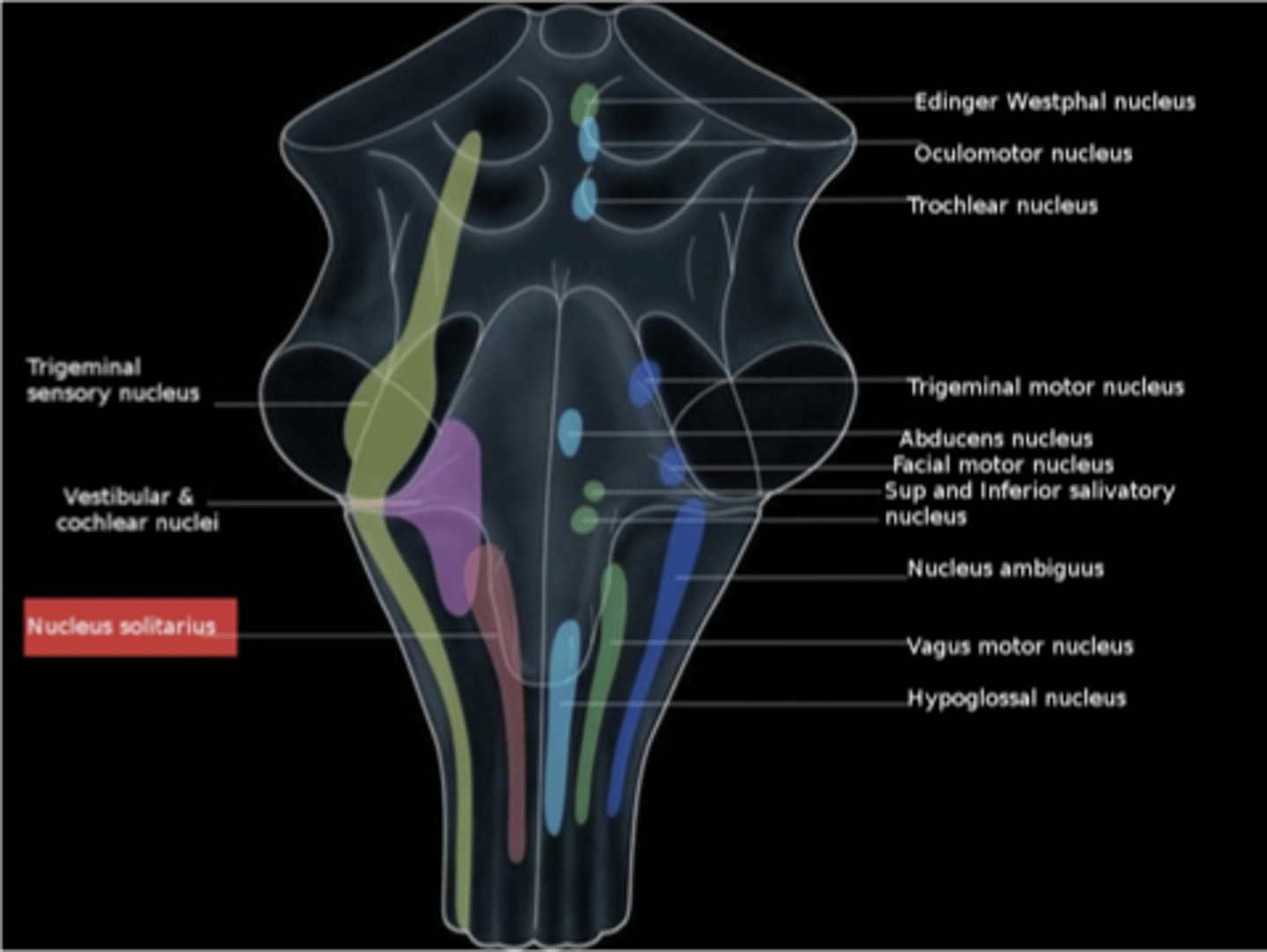
what are 2 important axon projections to the insula? why is this important?
1. SVAs conveying taste
2. GVAs conveying visceral pain;
important for conditioned taste aversion (teaching the consumer to avoid potentially dangerous food)

(t/f) anosmia and botched inferior alveolar nerve blocks both result in the loss of taste
true; cranial nerve lesions, medication, and epileptics can also cause the loss of taste
(t/f) people can experience a phenomenon that mimics conditioned taste aversion with non-noxious foods
true; when ingesting something non-noxious then getting sick later from another reasons causes the brain to associate the non-noxious food with the sickness